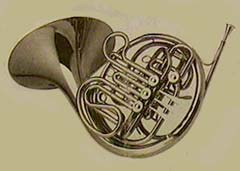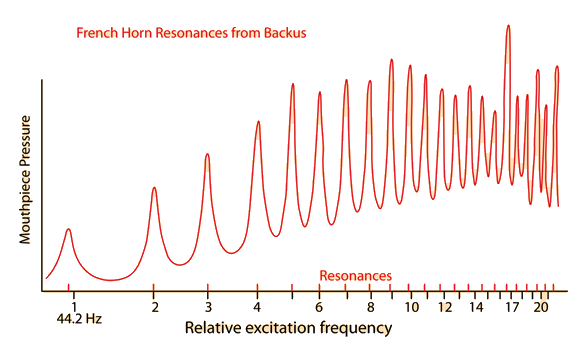The French Horn
Though perhaps tracing its ancestry back to the use of animal horns by primitive man, the modern horn took a recognizable form in the 18th century. It was made with a flaring bell and one or two loops. It was made in the key of F with a length of about 12 ft and in a key of C with about 8ft of length. It became known in England about this time, and they called it the French horn. Starting in the 1710s, adding interchangeable extra crooks allowed a performer to change the length of the horn to alter its pitch. German hornist Anton Joseph Hampel discovered that hand stopping the horn allowed the player a few more notes. Modern French horns have three valves which lower the pitch a semitone, a tone, and three semitones (minor third). The valves of a horn are typically rotary valves. By the end of the 19th century, the horn in F had become standard. It is now typically combined with a shorter horn in B-flat to give a better high range. A fourth valve (thumb valve) is used to change between the F and the B-flat horn. Backus, as a horn player, comments that the F horn is usually used for low notes and the B-flat horn for high notes.
One characteristic of the French horn is the existence of well defined resonances up to the 22nd or beyond, playable up to at least the 16th harmonic, compared to about 9 playable resonances for the trumpet and trombone. Playing with the hand somewhat in the bell is also unique; it increases the acoustic mass of the air column and lowers the resonances. Backus comments that it helps with control of the tone quality and intonation. It also allows the instrument to produce resonant peaks out to about 1500 Hz, compared to about 750 Hz without hand closure.
|
Index
Brass concepts
Brass instruments
Musical instruments
Reference
Backus
Ch 12 |

